If you want to learn more about how to build a waist high raised garden bed you have to take a close look over the free plans in the article. I have designed this planter so you can grow vegetable and other plans in your own backyard or on a patio. The best thing about this project is that you don’t have to lean to take care of the plans or to harvest the vegetables. This design is perfect for elderly persons. More garden projects HERE.
If you want to get the job done in a professional manner, we recommend you to plan everything with attention, as to prevent costly mistakes and to build a professional garden bench. Invest in high quality materials, such as cedar, pine or redwood, as the structure will be exposed to all kinds of weather. Apply a few coats of paint over the components, to enhance their appearance and to protect them from bad weather.
Waist High Raised Garden Bed – Free DIY Plans

Building a waist high raised garden bed
Materials
- 1 – 6 pieces of 2×4 lumber – 30″ long, 4 pieces – 18″ long, 2 pieces – 3 1/2″ long, 2 pieces – 13 1/2″ long LEGS
- 2 – 4 pieces of 2×4 lumber – 23 1/4″ long, 2 pieces – 28 3/4″ long STRETCHER
- 3 – 3 pieces of 2×4 lumber – 23 1/4″ long, 6 pieces – 26 3/4″ long TOP SUPPORTS
- 4 – 4 pieces of 1×8 lumber – 21 3/4″ long, 4 pieces – 72″ long GARDEN BED
- 5 – 3 pieces of 1×8 lumber – 70 1/2″ long BOTTOM
- 4 pieces of 2×4 lumber – 6′
- 2 pieces of 2×4 lumber – 8′
- 6 pieces of 1×8 lumber – 6′
- 2 1/2″ screws
- 1 5/8″ screws
- wood glue, stain/paint (for base)
- soil
Tools
- Hammer, Tape measure, Carpentry square
- Miter saw, Drill machinery, Screwdriver, Sander, Router
- Safety Gloves, Safety Glasses, Respiratory Mask
Time
- One day
STEP 1:
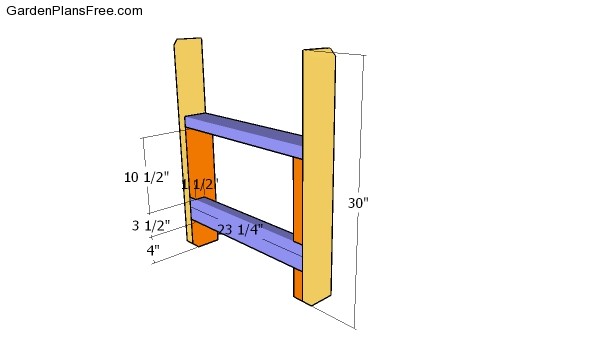
Side Vertical supports
Build the end frames for the planter box. Cut the components from 2×4 lumber, as shown in the diagram. Drill pilot holes and insert 2 1/2″ screws to lock them into place tightly.
STEP 2:
Assemble the middle frame for the elevated garden planter.
STEP 3:

Bottom base supports
Fit the 2×4 stretchers to the base of the garden planter. Drill pocket holes at both ends of the stretchers. Insert 2 1/2″ screws to lock the stretchers into place tightly. Make sure the corners are square.
STEP 4:
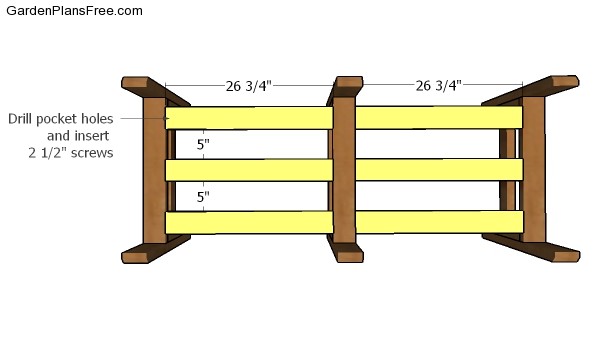
Top base supports
Drill pocket holes at both ends of the 2×4 supports and secure them to the frames, as shown in the diagram. Use 2 1/2″ screws to lock the supports into place tightly.
STEP 5:

Building the frame of the garden bed
Build the 2 frames for the planter box. Drill pilot holes and insert 1 5/8″ screws. Make sure the corners are square and align the edges flush.
STEP 6:

Fitting the bottom slats
Fit the 1×8 boards to the bottom of the planter box. Leave no gaps between the slats and align the edges flush. Drill pilot holes through the frame of the planter box and insert 1 5/8″ screws into the bottom slat.
STEP 7:
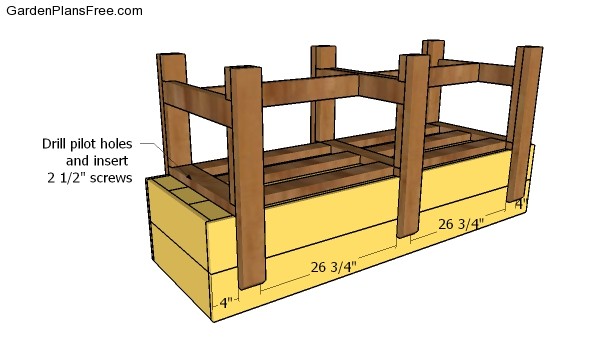
Assembling the raised garden bed
Fit the planter box to the frame. Center the box to the frame. Drill pilot holes through the box and insert screws into the framing.
STEP 8:
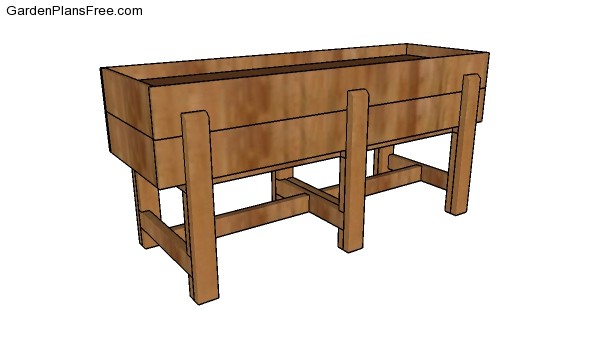
Waist high raised garden bed plans
STEP 9:
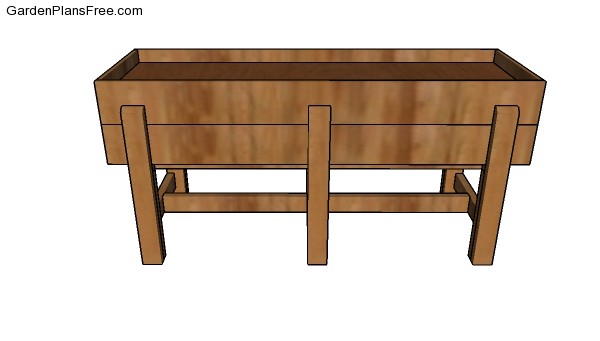
Waist high raised garden bed plans free
I recommend you to check if the components are locked into place properly and structure is rigid enough for your garden. Make sure there are no protruding screws or sharp edges. Fill the holes with wood putty and then smooth the surface with sandpaper. Fill the planter with soil and then plant the vegetables. Drill a few holes through the bottom, for drainage.
PRO TIP: Apply several coats of paint or stain over the components, in order to protect them from decay. Check out the rest of the project to learn more about building garden projects.

